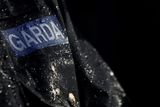First humans came here 33,000 years ago, reindeer bones show
Ancient hunters living in Ireland had black skin and blue eyes, according to a documentary about the Burren.
The lives of people living in prehistoric times in the region are portrayed by actors and described by academics in the second episode of the RTÉ programme, which reveals striking new discoveries about Ireland’s earliest inhabitants.
Dr Lara Cassidy, an expert on ancient DNA and genetics at Trinity College Dublin, said bone fragments found in megalithic tombs in the Burren in Co Clare showed a direct link between two distinct groups — hunter gatherers and the farmers who built the large megalithic structures.
The Burren: Heart of Stone contains a dramatic revelation that upends existing assumptions that the first humans came to Ireland around 12,500 years ago. It reveals bones of reindeers showed evidence the animals were butchered by humans in Ireland 33,000 years ago.
The first inhabitants of Ireland survived by hunting, fishing and gathering edible plants while bears and wolves roamed primeval forests.
A large influx of distinctly different people with sallow skin and dark-coloured eyes happened 6,000 years ago and these new arrivals began farming and building stone walls and large megalithic stone structures.
Dr Cassidy said the bone fragments of an entombed member of the newer farmer population showed one of the farmer’s recent ancestors, potentially a great grandparent, was a member of the earlier hunter-gatherer population. DNA examination of bones showed the Irish hunter-gatherer people had dark or black skin but blue eyes and were taller than the sallow-skinned farmers and builders who replaced them.
She said the last major movement of people into Ireland took place around 4,500 years ago. These people generally became the dominant population, with their arrival heralding the Bronze Age.
“We are seeing a very strong genetic continuity from the early bronze age population to the modern Irish population. However, gene pools continued to evolve,” Dr Cassidy said.
The rocky limestone landscape of the Burren is excellent for the preservation of DNA and Dr Cassidy told the Sunday Independent: “The Burren area is an amazing time capsule. It has one of the richest archaeological landscapes in Europe.”
Dr Ruth Carden, a zooarchaeologist and adjunct research fellow at University College Dublin, said the carbon dating of a reindeer bone revealed it was butchered by humans in Ireland 33,000 years ago.
This “changed forever” the understanding of human history in Ireland and north-west Europe as it proved there was human activity in the region much earlier than previously believed.
“The Burren landscape is a place shrouded in mystery, but in every rock and in every stony field there is a story waiting to be told,” film-maker Katrina Costello, who directed and produced the two-part documentary, said.
“At first sight it’s a vast, wild empty landscape of bare rock, but local experts bring us through the Burren to reveal its secrets.
“It is one of the most diverse landscapes on earth, teeming with rarities from nature, a criss-cross of stone walls and an abundance of ancient monuments.”
The Burren: Heart of Stone is on tonight at 6.30pm on RTÉ One
Join the Irish Independent WhatsApp channel
Stay up to date with all the latest news














